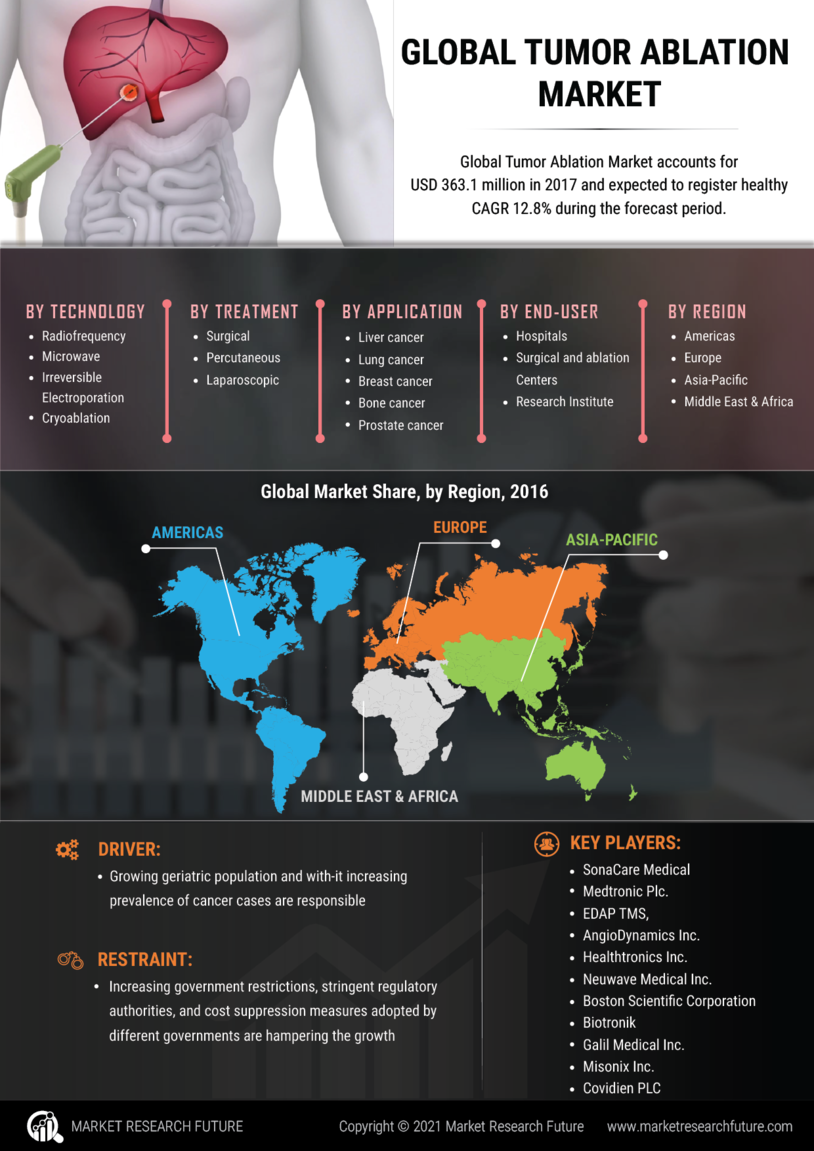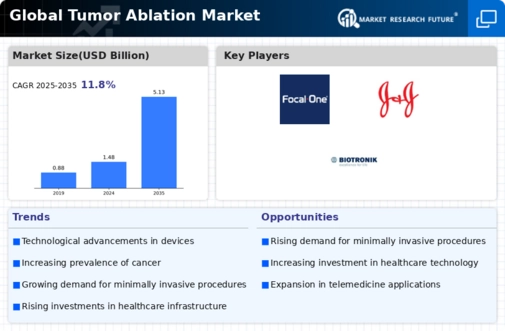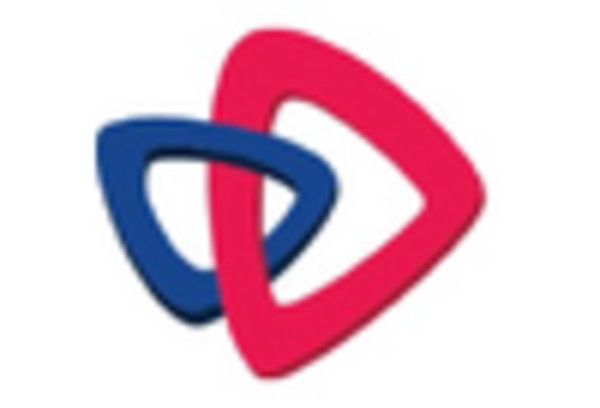Rising Incidence of Cancer
The increasing prevalence of cancer worldwide is a primary driver for The Global Tumor Ablation Industry. According to recent statistics, cancer cases are projected to rise significantly, with estimates suggesting that by 2040, the number of new cancer cases could reach 27.5 million annually. This alarming trend necessitates the development and adoption of effective treatment modalities, including tumor ablation techniques. As healthcare systems strive to address this growing burden, the demand for innovative and efficient treatment options is likely to surge. Tumor ablation, known for its ability to target tumors with precision while minimizing damage to surrounding tissues, is becoming an essential component of cancer care. Consequently, the rising incidence of cancer is expected to propel the growth of The Global Tumor Ablation Industry in the coming years.
Increasing Investment in Cancer Research
The surge in investment directed towards cancer research is a pivotal driver for The Global Tumor Ablation Industry. Governments and private organizations are allocating substantial funds to develop innovative cancer therapies, including ablation techniques. This financial support is crucial for advancing clinical trials, improving treatment protocols, and enhancing patient outcomes. Recent reports indicate that global spending on cancer research has reached unprecedented levels, with billions of dollars being invested annually. Such investments not only foster innovation but also facilitate collaborations between research institutions and healthcare providers, leading to the development of new ablation technologies. As research continues to yield promising results, The Global Tumor Ablation Industry is poised for growth, driven by the introduction of novel treatment options that meet the evolving needs of cancer patients.
Technological Innovations in Ablation Techniques
Technological advancements play a crucial role in shaping The Global Tumor Ablation Industry. Innovations such as radiofrequency ablation, microwave ablation, and cryoablation have revolutionized the treatment landscape, offering enhanced efficacy and safety profiles. For instance, the introduction of image-guided techniques has improved the accuracy of tumor targeting, thereby increasing the success rates of procedures. Furthermore, the integration of robotic systems and artificial intelligence in ablation procedures is anticipated to enhance precision and reduce recovery times. As these technologies continue to evolve, they are likely to attract more healthcare providers to adopt tumor ablation as a preferred treatment option. The ongoing research and development efforts in this domain suggest a promising future for The Global Tumor Ablation Industry, as new techniques emerge to address various tumor types and patient needs.
Rising Awareness and Education on Cancer Treatments
The increasing awareness and education surrounding cancer treatments are vital drivers for The Global Tumor Ablation Industry. As patients become more informed about their treatment options, there is a growing demand for effective and less invasive therapies. Educational campaigns and outreach programs by healthcare organizations are playing a significant role in disseminating information about tumor ablation techniques. This heightened awareness is likely to lead to more patients seeking these advanced treatment options, thereby boosting market growth. Additionally, as healthcare providers emphasize the benefits of tumor ablation, including shorter recovery times and improved quality of life, patient acceptance is expected to rise. Consequently, The Global Tumor Ablation Industry stands to benefit from this trend, as more individuals opt for ablation as a viable treatment alternative.
Growing Preference for Minimally Invasive Procedures
The shift towards minimally invasive procedures is significantly influencing The Global Tumor Ablation Industry. Patients increasingly favor treatment options that offer reduced recovery times, less postoperative pain, and minimal scarring. Tumor ablation techniques align well with these preferences, as they typically involve smaller incisions and shorter hospital stays compared to traditional surgical methods. Market data indicates that minimally invasive procedures are expected to account for a larger share of the overall surgical market, with a projected growth rate of over 10% annually. This trend is further supported by advancements in imaging technologies that facilitate precise tumor localization and treatment delivery. As healthcare providers adapt to these changing patient expectations, the demand for tumor ablation procedures is likely to rise, thereby driving the growth of The Global Tumor Ablation Industry.


















Leave a Comment